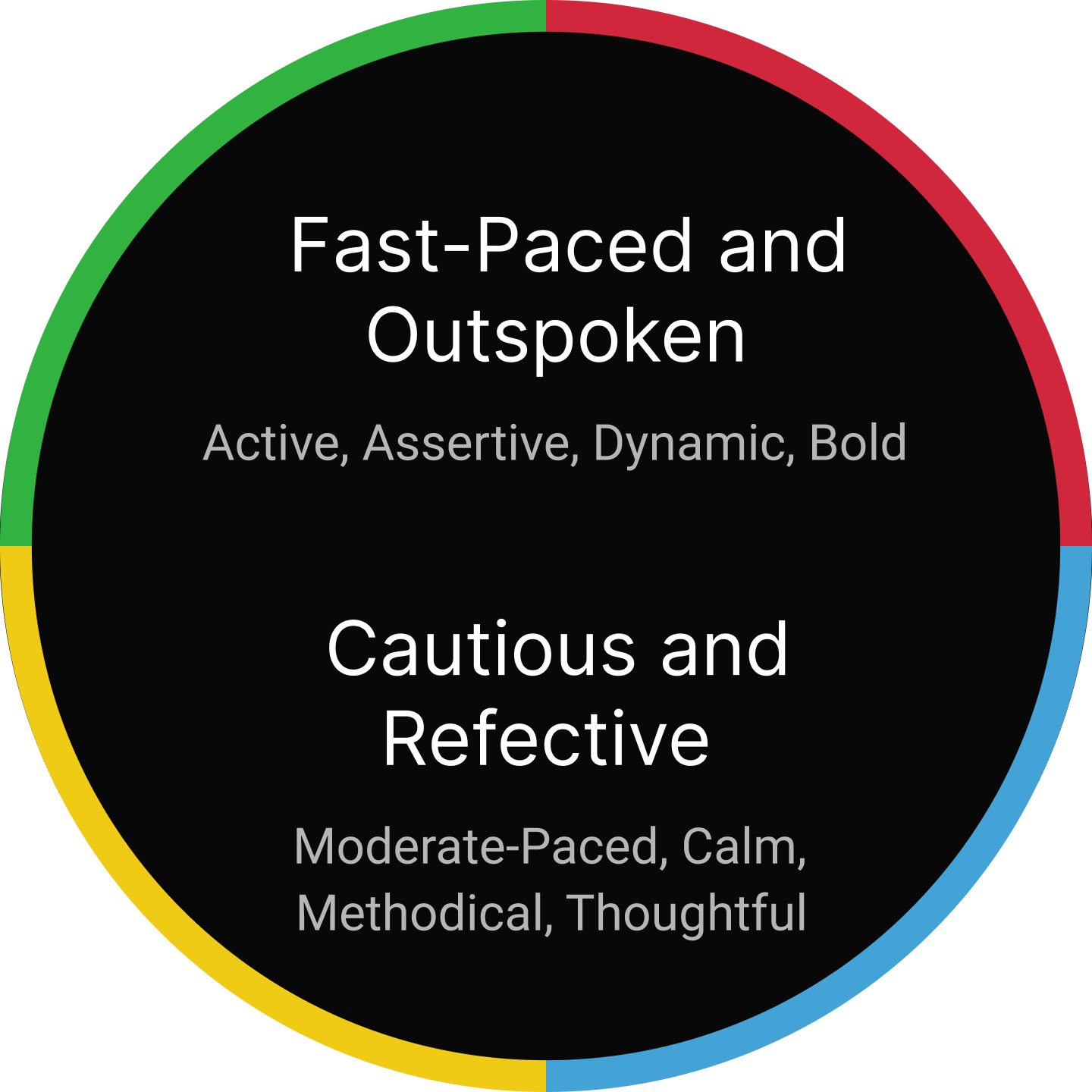The DISC personality model is a behavior assessment tool based on the four different personality traits: Dominance, Influence, Steadiness, and Conscientiousness. It is used in various settings, including the workplace, to provide insights into behavior and personality traits.
DiSC measures preferences and tendencies, not skill or ability. It’s a tool for dialogue, not diagnosis
Everyone embodies a combination of all four styles, but we tend to have a preference for one or two styles that come more naturally to us and require less energy. It's similar to being left-handed but still being able to write with your right hand; however, it may require more effort, concentration, and energy to do so, and it may feel less natural.
The two dimensions
The DiSC model is based on the idea of two fundamental dimensions of human nature, represented by these two axes. The vertical axis runs from active and outspoken at the top of the circle to more thoughtful and reflective at the bottom of the circle. The horizontal axis runs from accepting and warm on the right side of the circle to questioning and skeptical on the left side of the circle.

The intersection of these two dimensions creates the four basic DiSC styles: those with the D style tend to be skeptical and active, those with the i style tend to be active and accepting, those with the S style tend to be accepting and reflective, and those with the C style tend to be reflective and skeptical.
Description of each style
Here’s a simple description to help you identify each style:
- Dominance - People who show dominance are results-oriented. They thrive in an environment where they can take control, be direct, and drive results.
- Influence - Individuals with this trait are strong communicators. They are good at influencing or persuading others, and they enjoy collaborating and working as part of a team.
- Steadiness - Individuals who score high on steadiness are reliable and patient. They prefer routine and structure and often thrive in supportive roles.
- Conscientiousness - People with conscientiousness are quality-oriented. They strive for perfection and appreciate accuracy and details.
Importance of DISC for Job Seekers
While you might identify with one or two styles, you are a blend of all 4 styles and the key is to recognize when you need to flex to another style for the situation or person.
The idea of stretch
The continuous nature of the DiSC circle also helps people understand the idea of “stretch.” It is helpful to think of your style as your home base or comfort zone. Someone with a C style may be very comfortable working alone on analytical projects that require accuracy. At times, however, this person may be called on to mingle with strangers at a professional function. In this case, the person is being asked to stretch across the circle toward the i style. Now, someone with the C style who has a dot close to the center of the circle will probably find this mingling distasteful, but manageable. On the other hand, someone with a C style whose dot is located on the edge of the circle is more likely to find this mingling highly stressful. In the second case, the person has had to travel farther outside their comfort zone, and that will require more energy. So, as a general rule, people with dots located close to the center usually have a somewhat easier time adopting foreign DiSC styles when the situation calls for it. People whose dots are on the edge of the circle may have to stretch more (and experience more stress) if they want to adopt another style. On the other hand, because these people have more pronounced DiSC styles, those styles are often accompanied by some very distinct strengths.


